Review: The 2024 Lamborghini Urus Performante
Looking back, it’s safe to say that the Lamborghini Urus birthed the concept of the super SUV. Its 2017 debut carved a new path for supercar brands in terms of portfolio expansion and profitability potential. At first, some competing brands showed interest in the concept, while others outright rejected it. Today, however, Sant’Agata Bolognese’s gamble has an abundance of rivals, including the Aston Martin DBX707, BMW XM Label, and the Ferrari Purosangue. And I haven’t even included those with whom it shares significant components, like the Audi RS Q8 and Porsche Cayenne Turbo GT.
Anticipating that its niche corner of the market would soon crowd, the Italian brand introduced the first special variant of its SUV in 2022, the Lamborghini Urus Performante. Built by following a formula that’s proved successful in the supercar space, the Performante drops 104 pounds while boosting power by 16 horsepower, making it the lightest and quickest Urus yet. Crucially, however, it substitutes the “base” model’s air springs in favor of a steel set, both firming up its ride while lowering its height by nearly an inch.
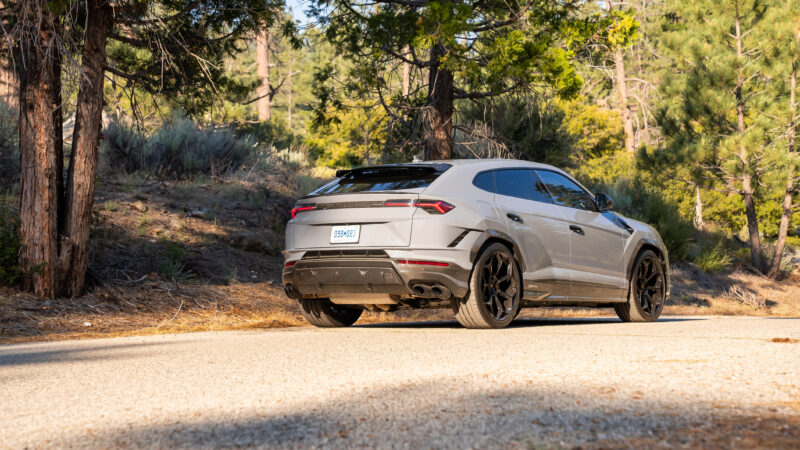
early seven years ago, the idea of a super SUV was largely foreign, and today, the concept of taking that platform and hardening it in the pursuit of performance remains largely unexplored. Can the lightest, quickest, and sportiest variant of Lamborghini’s super SUV also be the best?
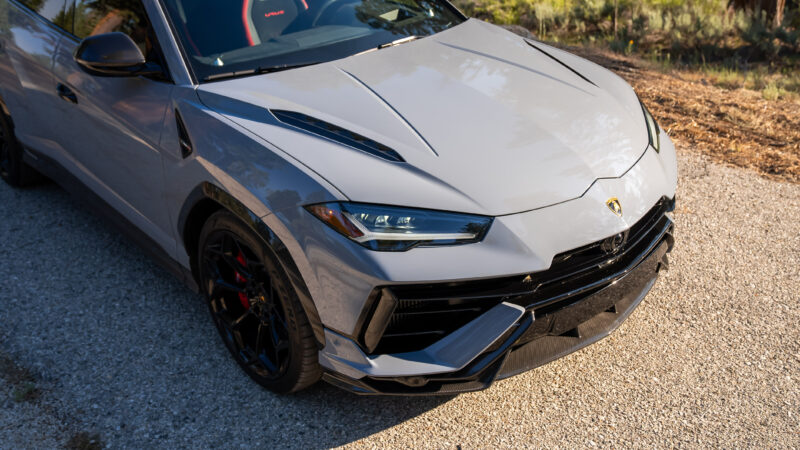
The Lamborghini Urus Performante first differentiates itself by injecting some much-needed stylistic theatre. Parked next to the car that debuted in 2017, its predecessor seems almost subtle. The Performante incorporates sharper lines in its front bumper, with points sticking out almost like fangs. Its hood features more prominent grooves alongside extractor cutouts adorned with carbon fiber louvers. Its front splitter, fender flares, side skirts, diffuser and upper spoiler also employ the lightweight material.
There’s carbon hiding beneath the skin as well, with a substantial portion of its 104-lb weight loss made possible by a composite hood. Alongside this reduction, adding a spoiler increases its downforce by up to 38 percent. At the same time, its steel springs lower its ride height by 0.8 inches while its track widens by 0.6 inches. A set of 23-inch wheels is an optional extra, as is a lightweight set of forged 22s, with this tester wearing the former. Performante gets titanium wheel bolts and bespoke Pirelli rubber in keeping with the sporty theme.
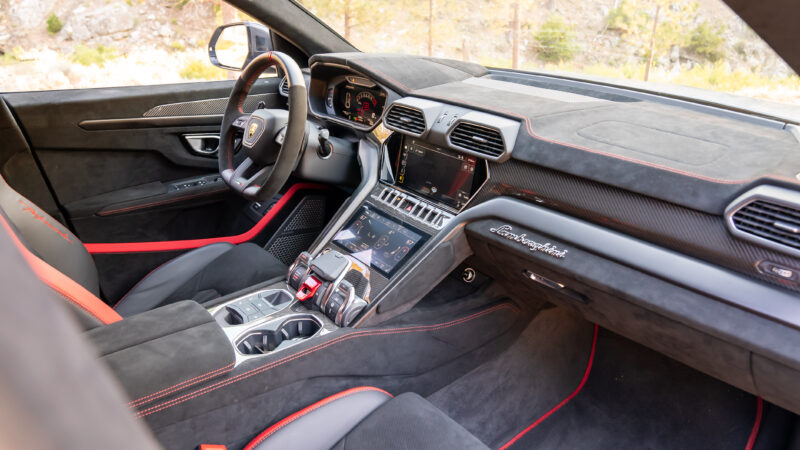
Its interior also gets the sporty treatment, trimmed almost exclusively in black Alcantara if you select the “Performante trim.” The bits not covered in the suede-like material contrast with glossy carbon fiber or red hexagonal stitching paired with red leather accents. Looking around the cabin, you might as well be in an Aventador SVJ from a textiles perspective, with endless reminders of this SUV’s sporty intentions. And while its screens and overall tech carry over, Lambo’s commitment to the hardcore bit on the materials side effectively sets the tone before you set off.
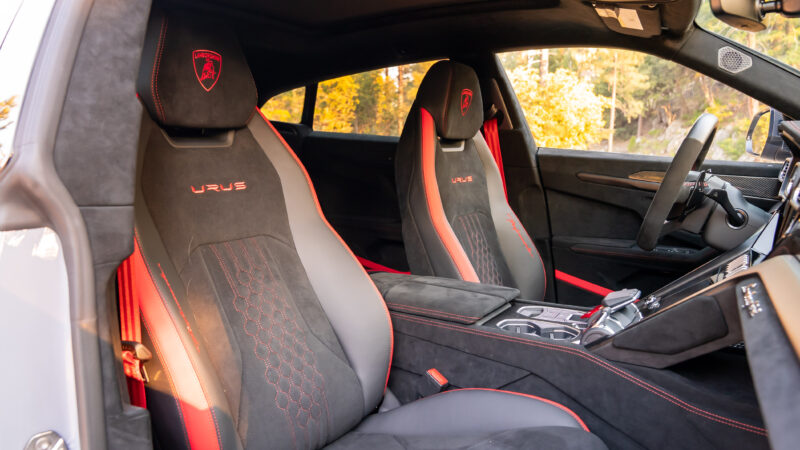
Firing up the Lamborghini Urus Performante awakens its standard Akrapovič sports exhaust system. Its titanium construction may shave some weight, but it doesn’t change the twin-turbo 4.0-liter V8’s burbly engine note; you get more of it. From the first few miles on city streets and highways, detecting its extra 16 horses is practically impossible. Such an incremental bump for a machine that weighs more than 4,700 lb is more effective at awarding titles like “quickest Urus” than genuinely impacting performance.
Still, thanks mainly to its weight loss, a new differential, and a total output of 657 hp and 627 pound-feet output, the Performante is the quickest Urus. It sprints to 62 mph in 3.3 seconds, and like the S model introduced in 2022, it tops out at 190 mph. On a twisty road, you need to know that the Urus has always been extraordinarily quick, and it remains so. Thanks to a healthy helping of torque low in the rev range aided quick-shifting eight-speed automatic transmission, you’ll run out of road long before it does steam.
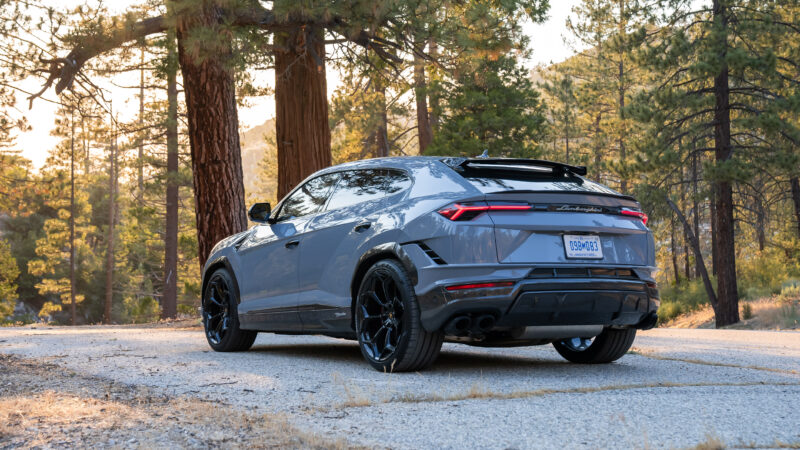
Yet, as familiar as its powertrain feels, its suspension couldn’t be more foreign. The discontinued “base” Urus I reviewed in late 2021 excelled by being firm enough when needed for a weekend drive while plush enough for the daily commute. This versatility is now outside the Performante’s scope. The decision to swap its air suspension setup with steel springs practically defines it, its hardcore persona never quite softening. While Lamborghini did develop new Strada, Sport, and Corsa drive modes, a set of adaptive dampers and springs can’t match its predecessor’s excellent ride quality.
That said, there are some major performance benefits once the road begins to twist. At speed and in Corsa mode, the Lamborghini Urus Performante reveals its payoff. Its firmer suspension and active anti-roll bars effectively dials out body roll. There’s an added sense of stability as you tackle even the tightest bends and an eagerness to respond to steering inputs immediately. This agility is helped by an updated rear axle steering system that responds more quickly, thanks to its updated software.
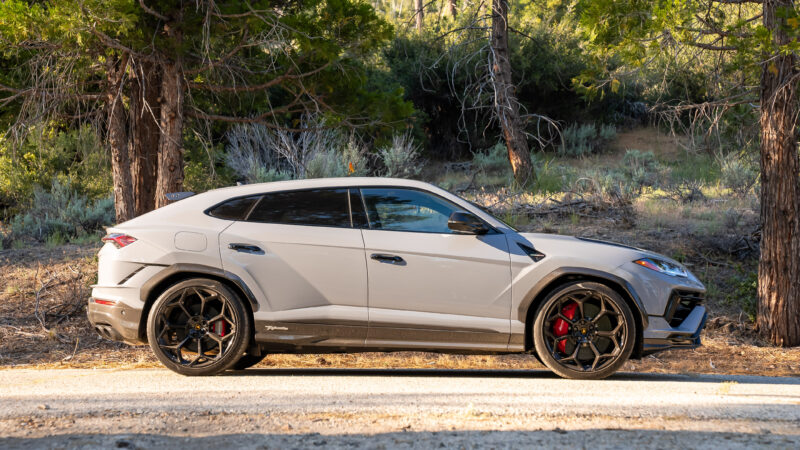
Its firmer setup simultaneously increases road surface feedback. You feel more of what’s happening beneath you as it’s channeled through the chassis and into the cabin. It’s much easier to detect when you’re approaching its grip limits, even while its steering remains far from talkative. This sets you up nicely to start leaning on its standard carbon-ceramic brakes, which, with 10-piston calipers upfront and enormous 17.3-inch rotors, have plenty of braking force to slow this 4,740-lb SUV down.
As with all special models, its added athleticism commands a premium. For 2024, the Lamborghini Urus Performante starts at $265,890, including a $3,995 destination fee, with this tester coming in at $339,152. The “base” model, the Urus S, costs nearly $24,000 less, starting at $241,843. The recently updated Aston Martin DBX707 costs $253,000, including a $4,000 fee, while a BMW XM Label commands $185,995, including a $995 fee. Only the Ferrari Purosangue stands as an outlier, with a base price just below $400,000.
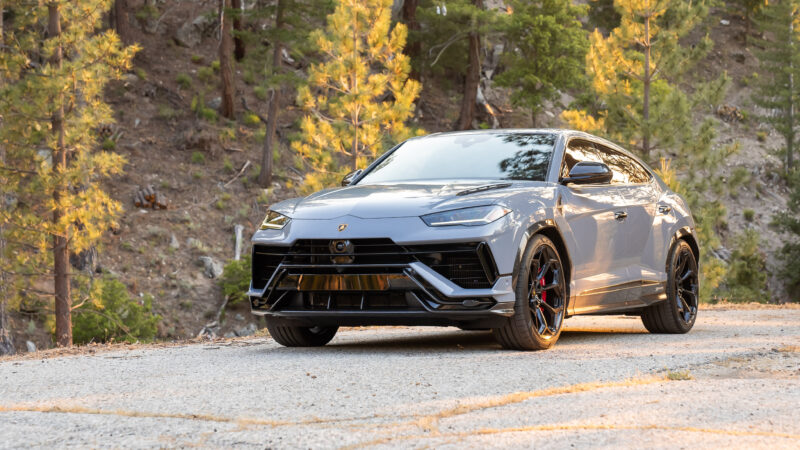
After a few days on the road, I’m not sure any other super SUV can match the Lambo’s performance on a back road. It is fast, agile, and uncannily stable in the corners, all things a tall vehicle that seats five and sports a massive trunk shouldn’t be able to do. Yet this strength doubles as the Performante’s only real weakness. If we assume that an SUV, super or not, is meant to be used daily, a firm ride ultimately limits how well it can play that role.
Yet, thanks to shifting priorities among enthusiasts, a $339,152 super SUV’s appeal hinges on more than just how well it rides. Its updated styling creates a more dramatic aesthetic, in line with the Ragin Bull’s mantra, while its Alcantara-trimmed cabin conjures up reminders of other special Lambos. As a result, the question of whether the lightest, quickest Urus is also the best is the wrong one to ask. The Performante is a better-driving, better-looking, and more exciting Urus, but how often will you find yourself on the right road to fully experience it?
The McLaren Senna Is A True Racecar For The Road
by Gabriel Vega
in Reviews
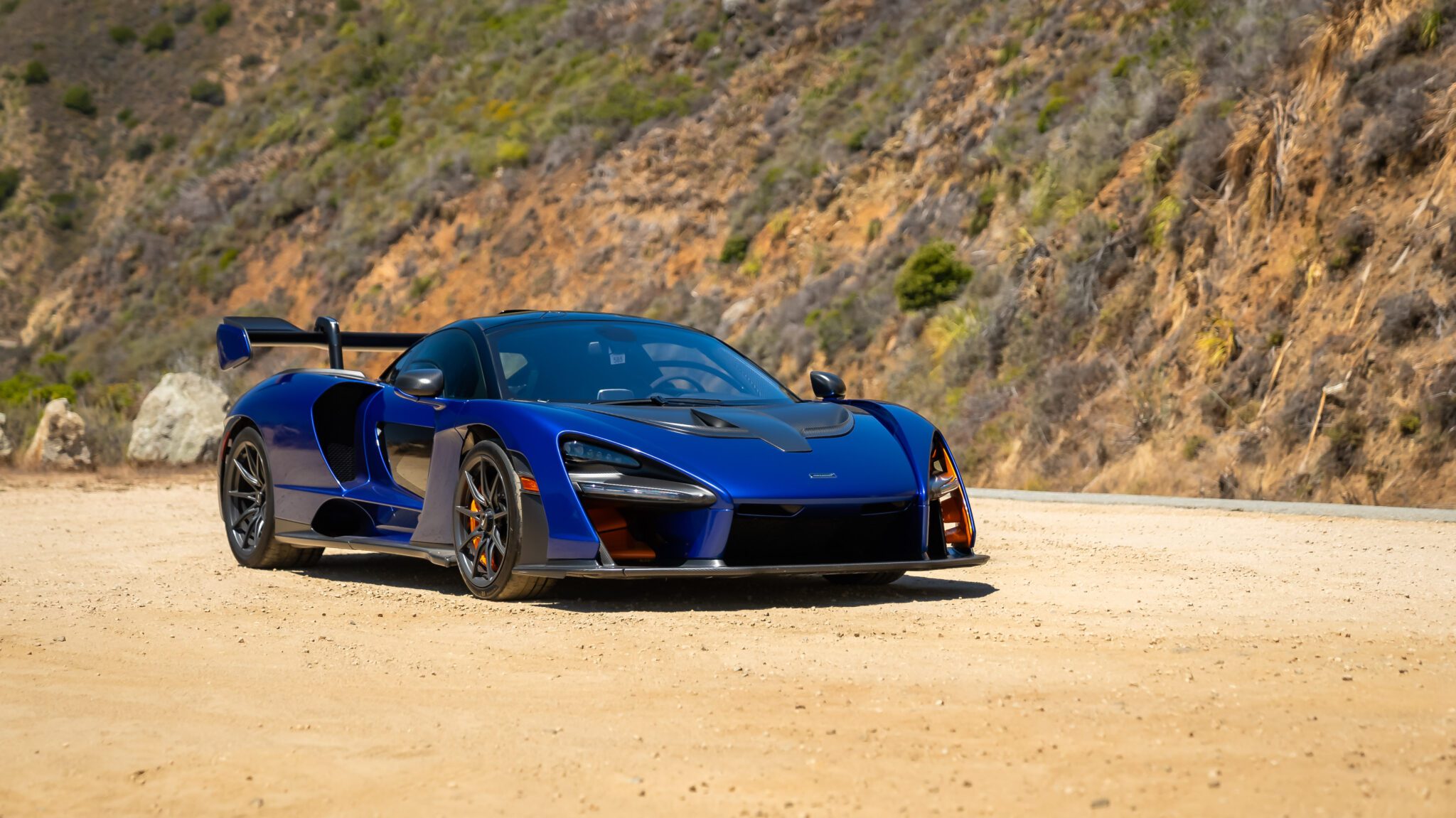
The keys to this McLaren Senna, an early factory-owned pre-production unit, came with warnings attached. The sternest came from Bruno Senna, yup, that Senna, who called it the noisiest, rattliest example he’d ever driven. Alongside the carmaker’s generous PR team, he insisted that its build quality wasn’t representative of the 500 customer cars produced. It hasn’t had an easy life either. Having racked up just under 10,000 of the harshest miles a car can cover, including starring in various destructive magazine tests, this Senna needed a complete restoration of its suspension before its sixth birthday.
As the warnings poured in, this car’s allure only grew. Drive opportunities in hypercars are rare enough, but a chance to sample a properly thrashed, high-mile, pre-production unit? That just doesn’t happen.
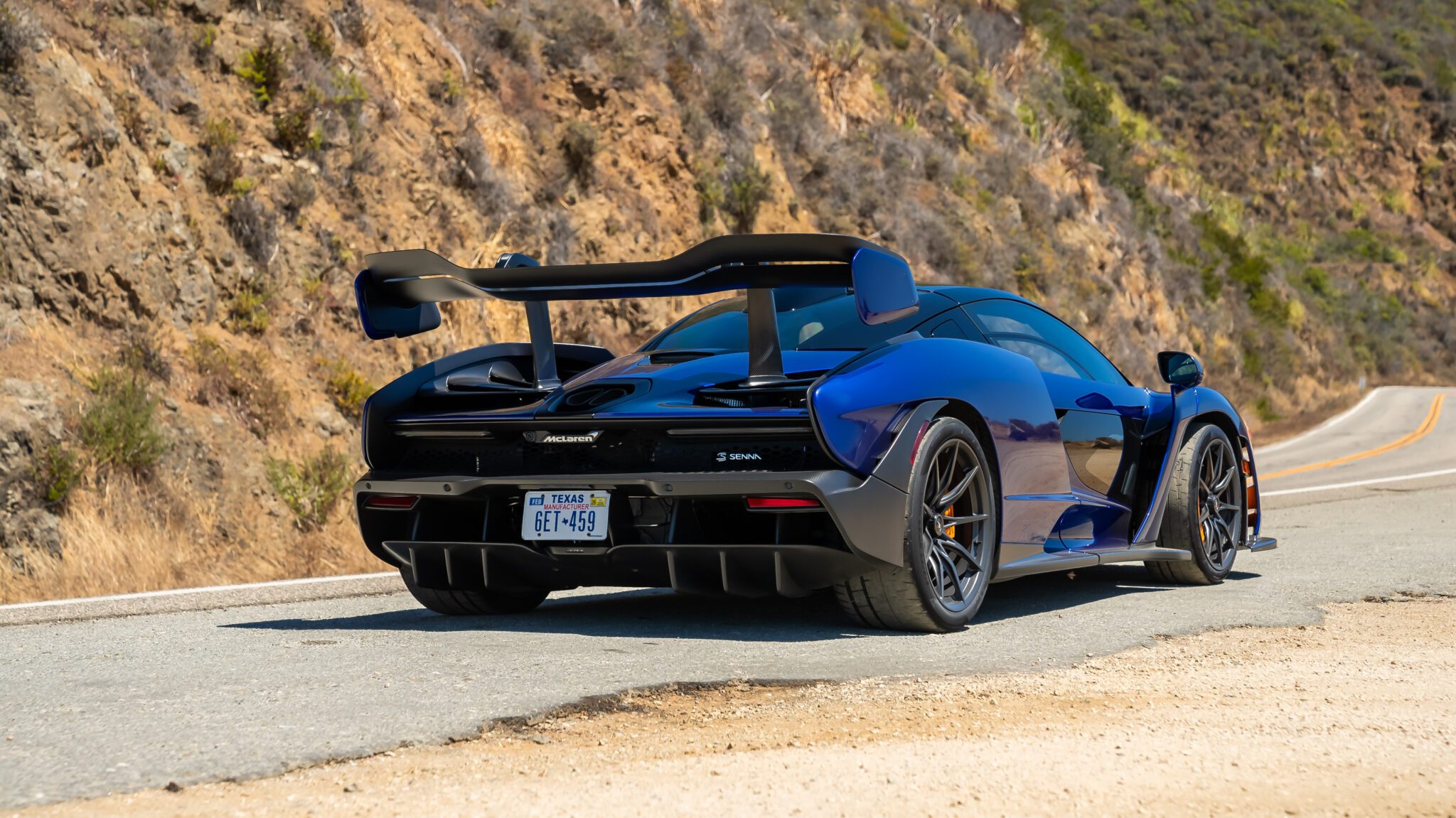
Powered by anticipation, excitement, and a dash of anxiety, I walked into the garage of the Portola Hotel in Monterey Bay, where the MSO Kyanos Blue Senna sat. It was the peak of Car Week, and a dozen young car spotters wielding supercar-hungry cameras swarmed the awaiting McLaren. This easy-to-sneak-into multi-level structure is famous for the metal it houses during this famed week in August. And alongside its low cost of entry, it’s one of few places you’ll find a Lamborghini Countach flanked by a Bugatti Veyron and a Mercedes-Benz 300 SL.
Cameras rolling, I fired up the McLaren’s 4.0-liter twin-turbo V8, engaged the front lift, and exited the crowded garage. Special attention was paid to save its nose. Accidentally creating a well-documented viral moment would make for an embarrassing start, but that’s the reality of driving a Senna during Car Week. From the moment I turned onto the streets of Monterey in search of the Pacific Coast Highway, I can’t recall an instance when I wasn’t being filmed or photographed. Car spotters would crowd crosswalks to get the perfect shot, capturing what I’m sure are flattering shots of me fiddling with this car’s antiquated but still usable navigation system. Too bad Apple Carplay wasn’t widely adopted back in 2018.
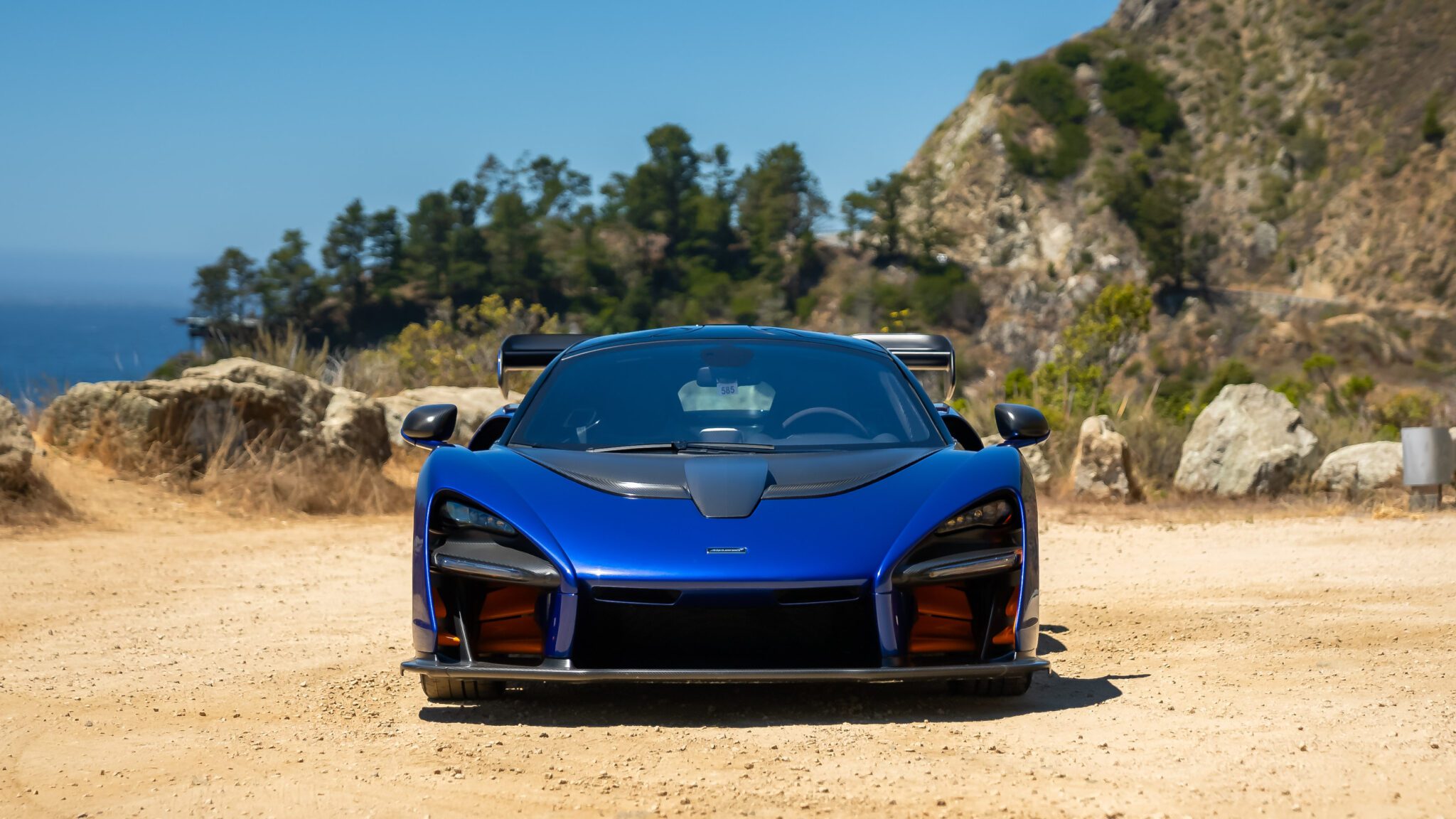
Despite the outpouring of attention, the Senna doesn’t stop traffic because it looks good. It is the clearest example of a car that prioritizes function over form, with its purposeful design generating a feeling of shock and awe. It’s a car you gaze upon with disbelief that it even exists. Yet, that McLaren successfully federalized it for sale in the US remains a tremendous feat. While cars like the Aston Martin Valkyrie and the Mercedes-AMG One arguably outdo it in terms of motorsport theatrics, they’ll have to cross the Atlantic under the “Show or Display” exemption. Years after the Senna’s 2017 debut, no fully US-legal road car is as dedicated to extremes.
Turning onto the Pacific Coast Highway, adorned by endlessly winding pavement, towering cliffs, and stunning ocean views, is usually a terrible idea during Car Week. A strong police presence, confused tourists piloting overpriced rentals, and easily annoyed locals make finding a road clear enough to exercise a car like the McLaren Senna a true challenge. Luckily, or technically unluckily, intense storms damaged sections of Highway 1, triggering its closure about 40 miles south of Carmel. With high hopes that a road to nowhere would provide enough open space, I pointed the Senna’s nose towards the coast.
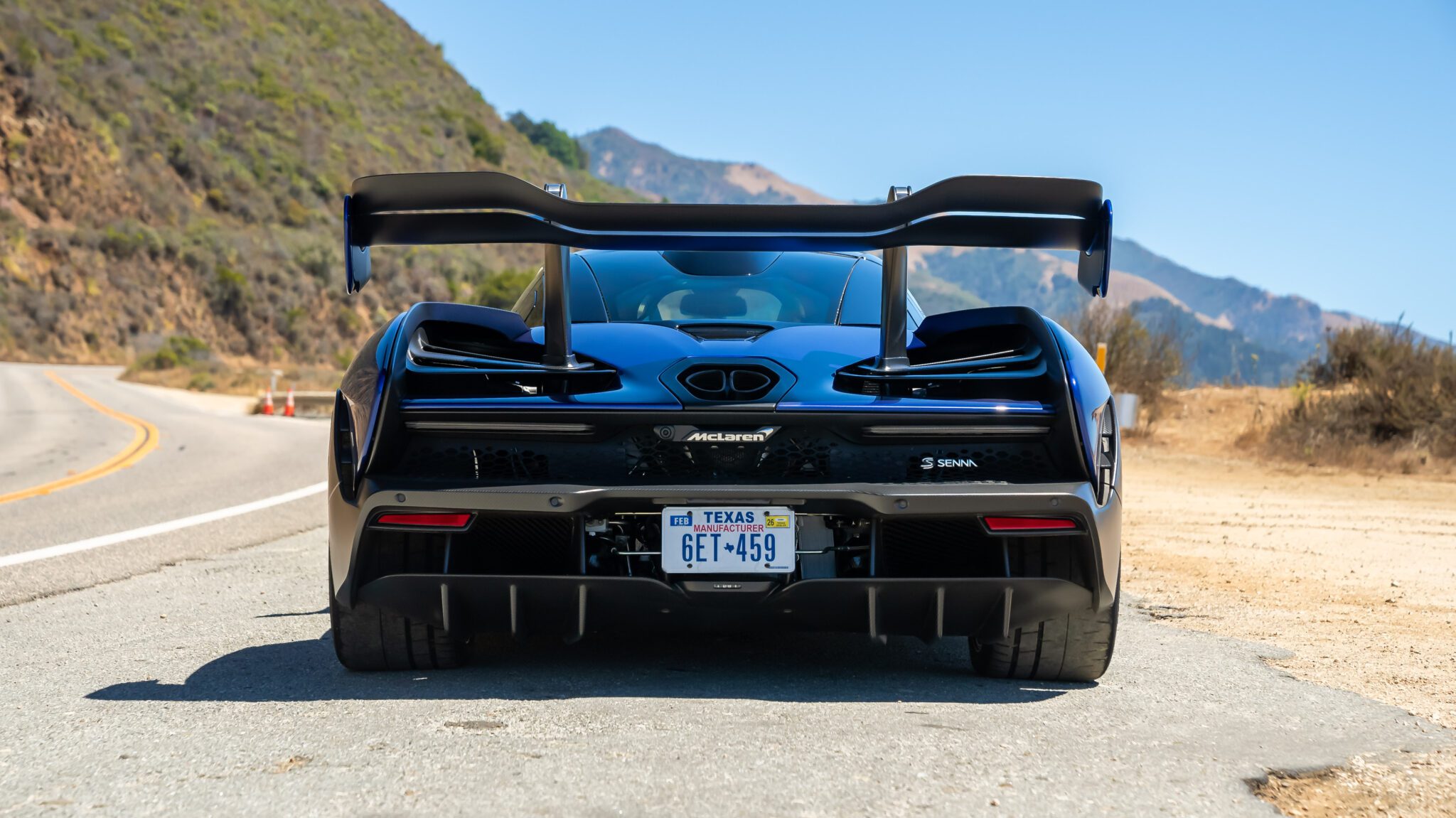
Immediately, I hit traffic, with my average speed dropping to what felt like a crawl. Unexpectedly, however, the McLaren Senna was unaffected by the slowed pace. Riding on a modified version of the carbon monocoque that underpins the 720S, the Senna also incorporates updated versions of its seven-speed dual-clutch automatic and its twin-turbocharged 4.0-liter V8, just boosted to 789 horsepower and 590 pound-feet of torque. As such, it doesn’t struggle in slow-moving traffic, shifting seamlessly in automatic mode with its dampers remaining relatively compliant in their softest setting.
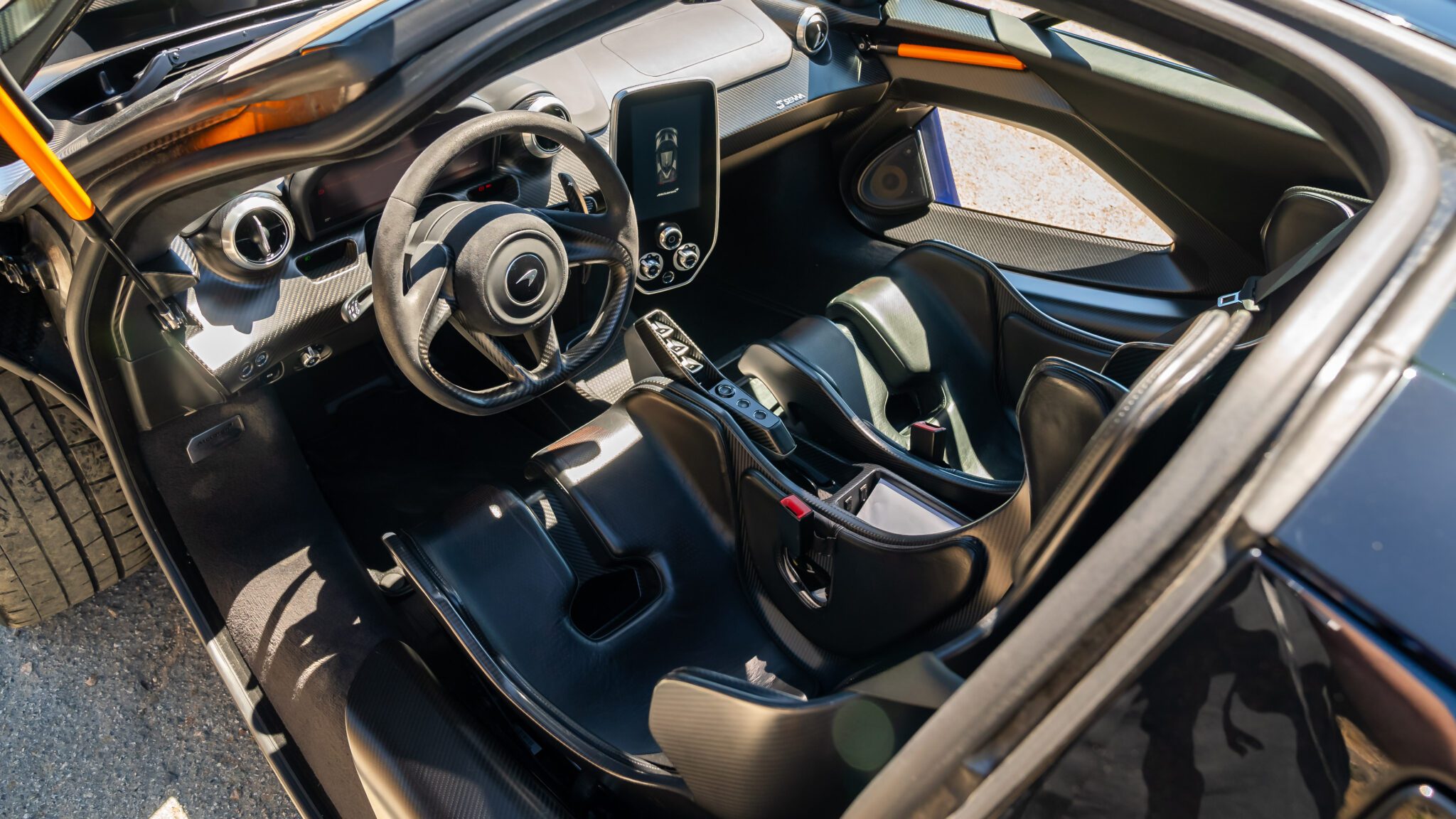
In the Senna, it’s easy to settle into what seems like an entirely normal driving experience until it’s suddenly not. Try to lower a window, and you’ll encounter an opening large enough to fit a postcard. Oh, and the switch that operates it is now on the roof, as is the start button and the door release.
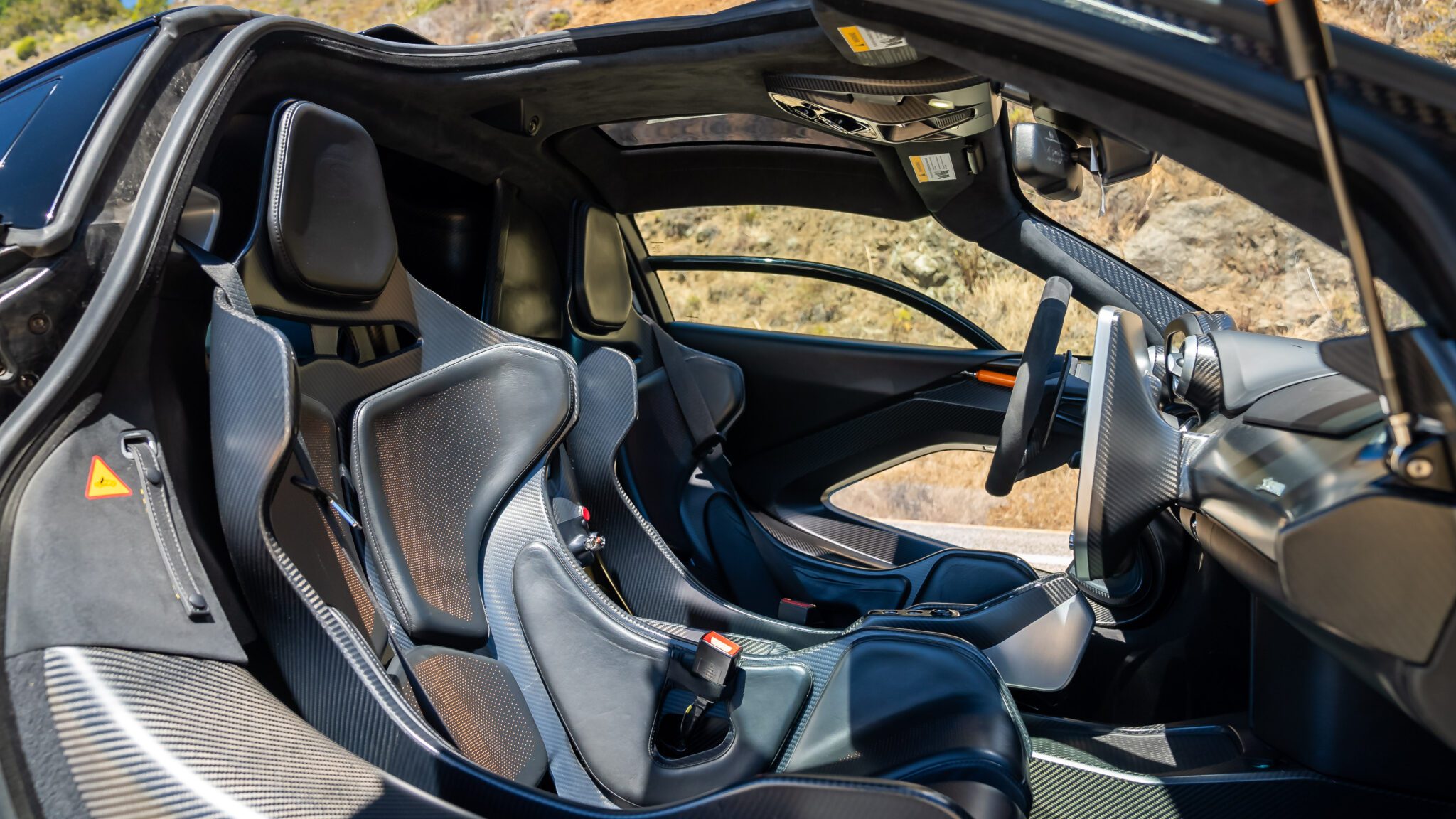
Glance out the side view mirror, and you’ll see its enormous rear wing making adjustments on the fly. Looking out the rear window feels akin to peering through a peephole, although you get yet another clear view of the massive spoiler. Even admiring the Pacific becomes an unusual experience as you can catch glimpses through the traditional side-view windows up top and the extra piece of glass in its door below.
There are constant reminders that you’re piloting something special. Be it the cabin, the stares of passers-by, or that split second when you catch a glimpse of its extreme design reflected off another car. Click down through a few gears, however, and the experience takes yet another turn. Passing what felt like, and what Waze indicated, was the last CHP officer on the route, I switched its powertrain and suspension settings into Sport.
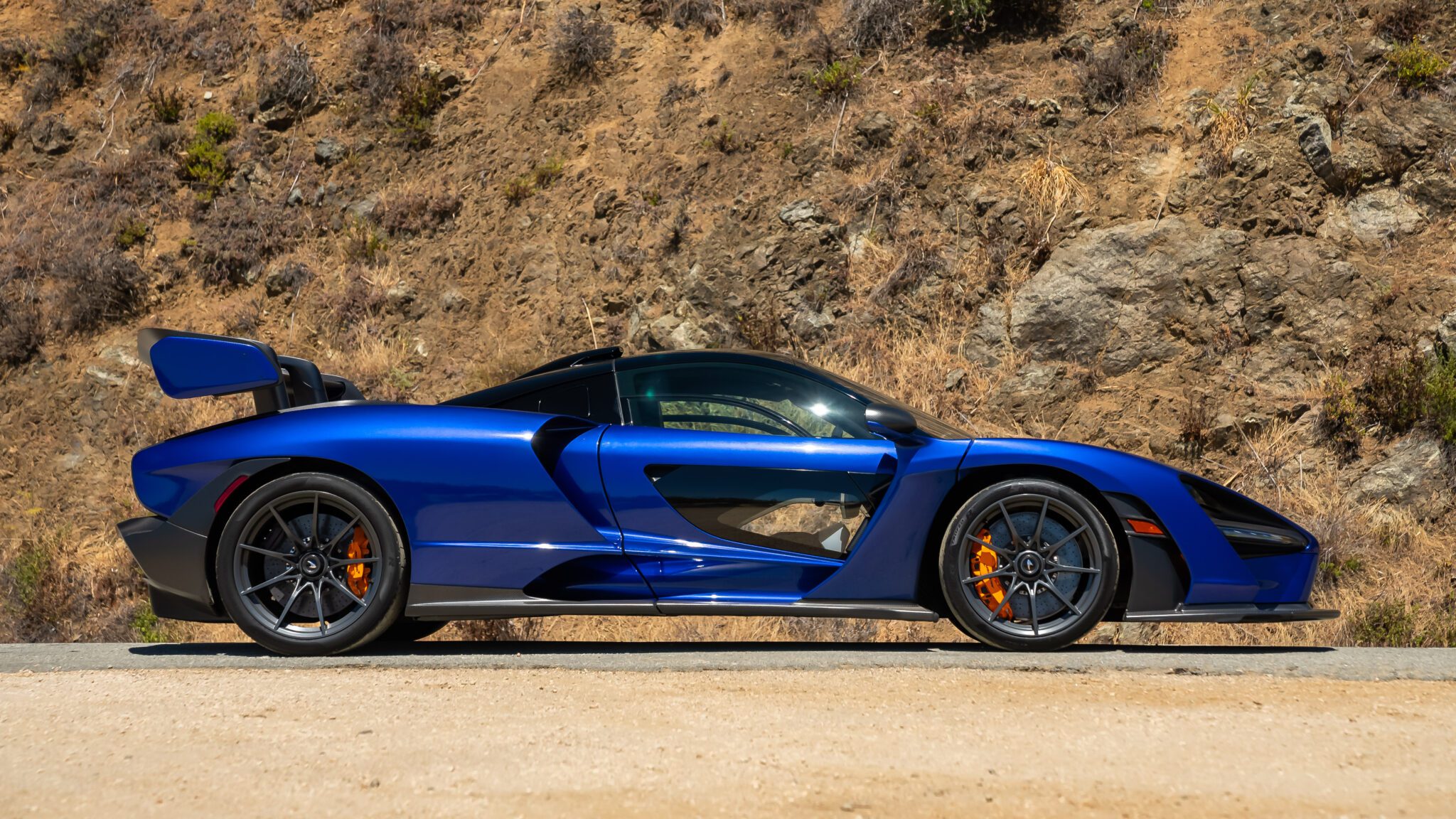
This McLaren Senna, which had up until this point, played the role of grand tourer, suddenly awoke in anger. The graphics of its digital instrument cluster morphed to display a large tachometer and a prominent gear indicator while its dampers stiffened considerably. I could instantly feel more road vibrations permeating through the cabin and, crucially, my fixed-back seat.
No longer confined to lower revs, the Senna’s exhaust note doubled in volume almost instantly, with a high-pitched buzz absent in all other McLarens. Of all the advice Bruno Senna gave me ahead of this afternoon, wearing earplugs was one I mistakenly ignored. He mentioned that the production cars were far quieter. Still, I hadn’t anticipated how loud this pre-production unit would be. Thankfully, the song emanating from its large twin pipes wasn’t just louder; it retained an exciting, raspy tone, which made punishing my eardrums worthwhile.
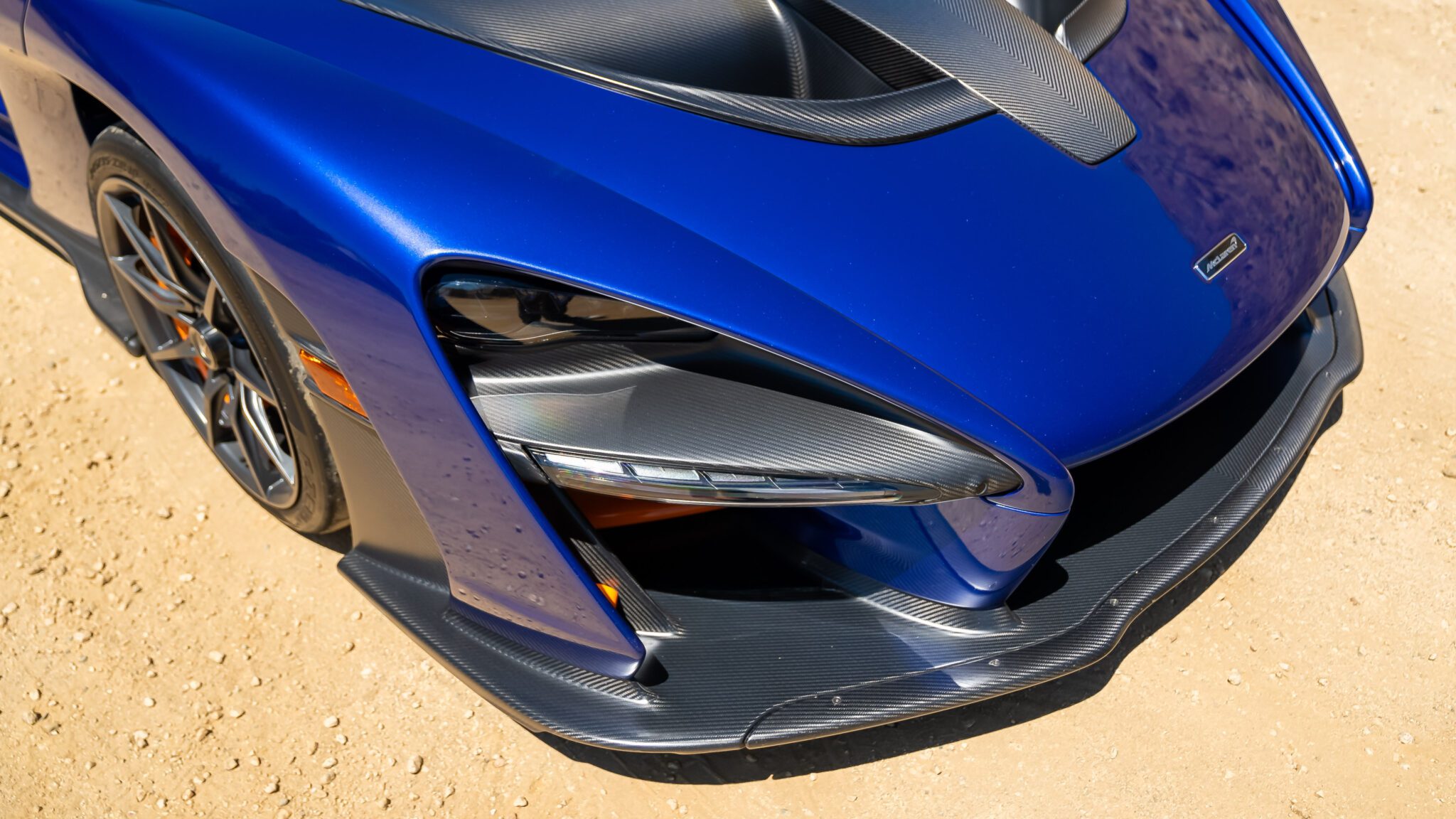
On paper, I can understand how the McLaren Senna might come across as a re-bodied 720S given all the parts sharing, but diving into the first bend at speed revealed it’s anything but. There’s an immediacy to the response you get from its front end that I’ve never felt before. It changes direction instantly without hesitation, its steering feeling almost telepathically quick. Its electro-hydraulic setup transmits every last road feature with near-constant feedback, even while resting on center.
Chaining some switchbacks reveals a feeling of masslessness you can’t fake with wider tires and firm suspension, a gift of this car’s 2,641-pound curb weight. It pays further dividends when you lean into the throttle between corners and it just picks up speed instantly as long as you avoid the turbo lag present at lower revs. Cresting a small hill provided a clear view of the road ahead. My impromptu road trip south had finally paid off, and I couldn’t see another car ahead for what must have been a mile. Assuming such an opening wouldn’t repeat itself, I dialed to track mode and went for it.
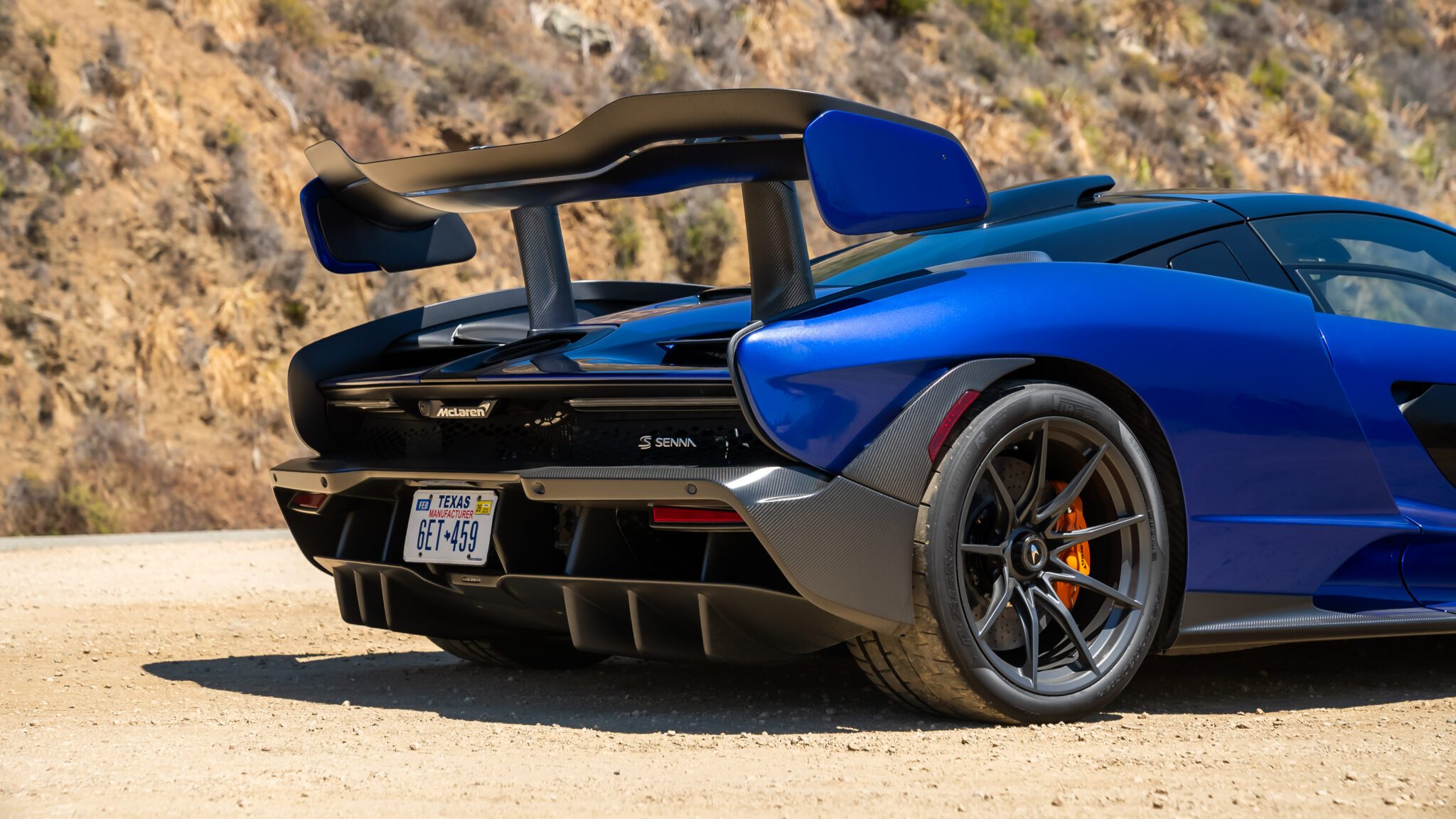
As in the 720S, the Senna’s digital cluster swiveled, revealing a small slit-like display showing the selected gear, engine revs, and current speed. The grip levels were unlike anything else I’ve experienced before. It’s undramatic in how confidently it sticks to the road with no added noise from its tires, just lateral forces embedding your torso into the leather seat pads. With each passing bend, its powerful carbon ceramics, quick front end, and grippy rubbers invited me to brake and turn later. Yet, as I did, the Senna never lost its composure, just picking up quicker corner speeds.
I’d love to tell you that the jump from Sport to Track was transformational, but even on one of the greatest roads in the country, accessing that highest level of speed simply isn’t possible outsie of a proper circuit. As enjoyable and confidence-inspiring as the McLaren Senna is to hustle up an empty mountain road, there’s an unshakable sense that you’ll reach your limits far before it does. Knowing when to back off, I found a turnout just ahead of the closure and pointed the Senna’s nose back to Monterey.
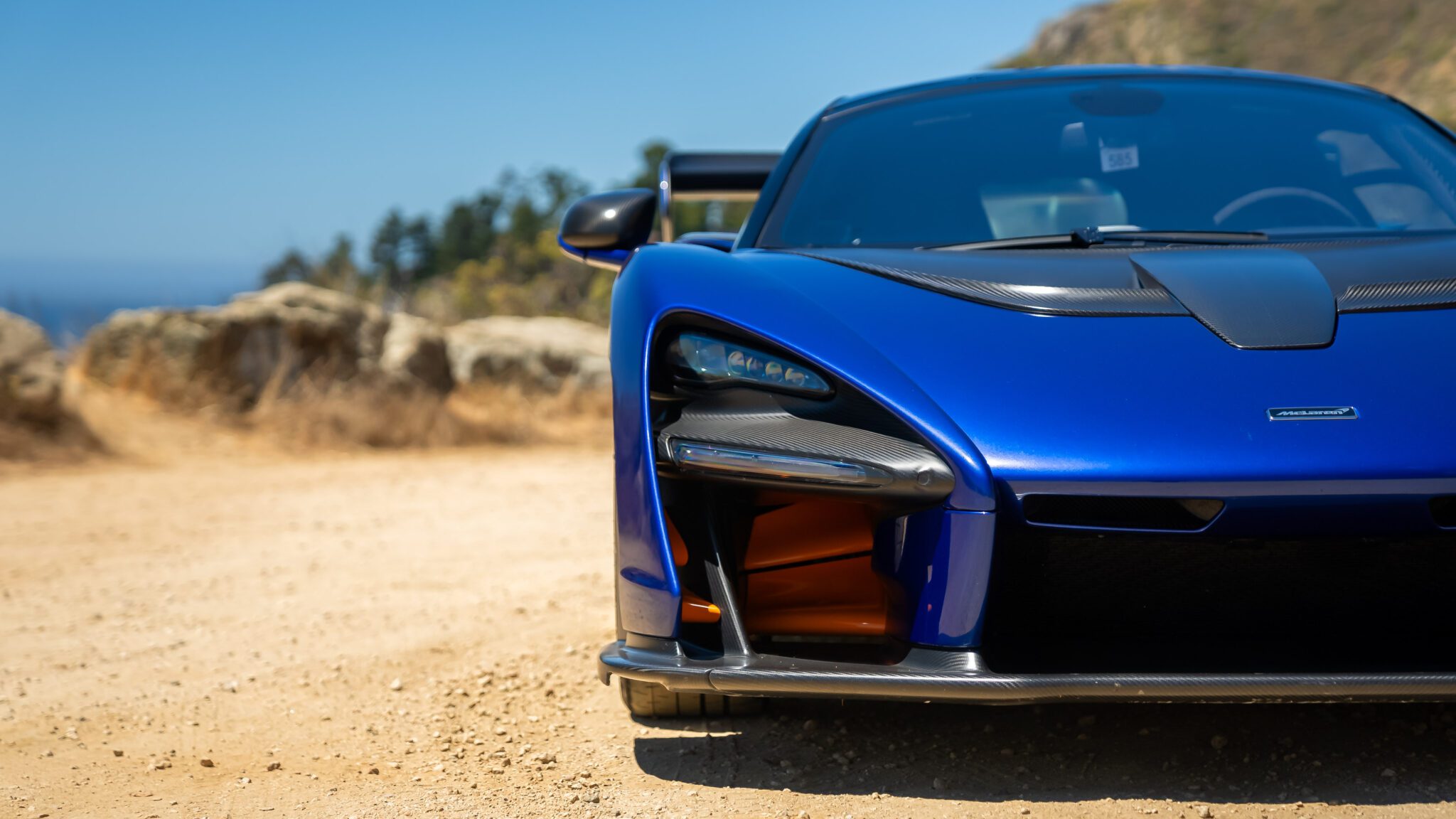
As part of McLaren’s Ultimate Series, this car carried a $958,966 base price when new, making it a seven-figure proposition once options were factored in. And despite not producing a million horsepower, this plants it firmly within the illusive hypercar category. A space dedicated to the cars that aren’t just quickest, although the Senna’s 2.8-second run to 60 mph and 211 mph top speed are nothing to scoff at, but those that deliver an experience most supercars can’t.
In this context, the McLaren Senna represents not just the best the carmaker could do in 2017 but a pivotal moment for its segment. This year’s Monterey Car Week saw multiple automakers that commonly reside in the seven-figure space, including new entrants, focus on more than just outright speed. With the arrival of electric super and hypercars in the interim making on-paper stats practically superfluous, there’s a renewed focus on the driving experience. The people who can have anything have spoken, and they want memorable drives.
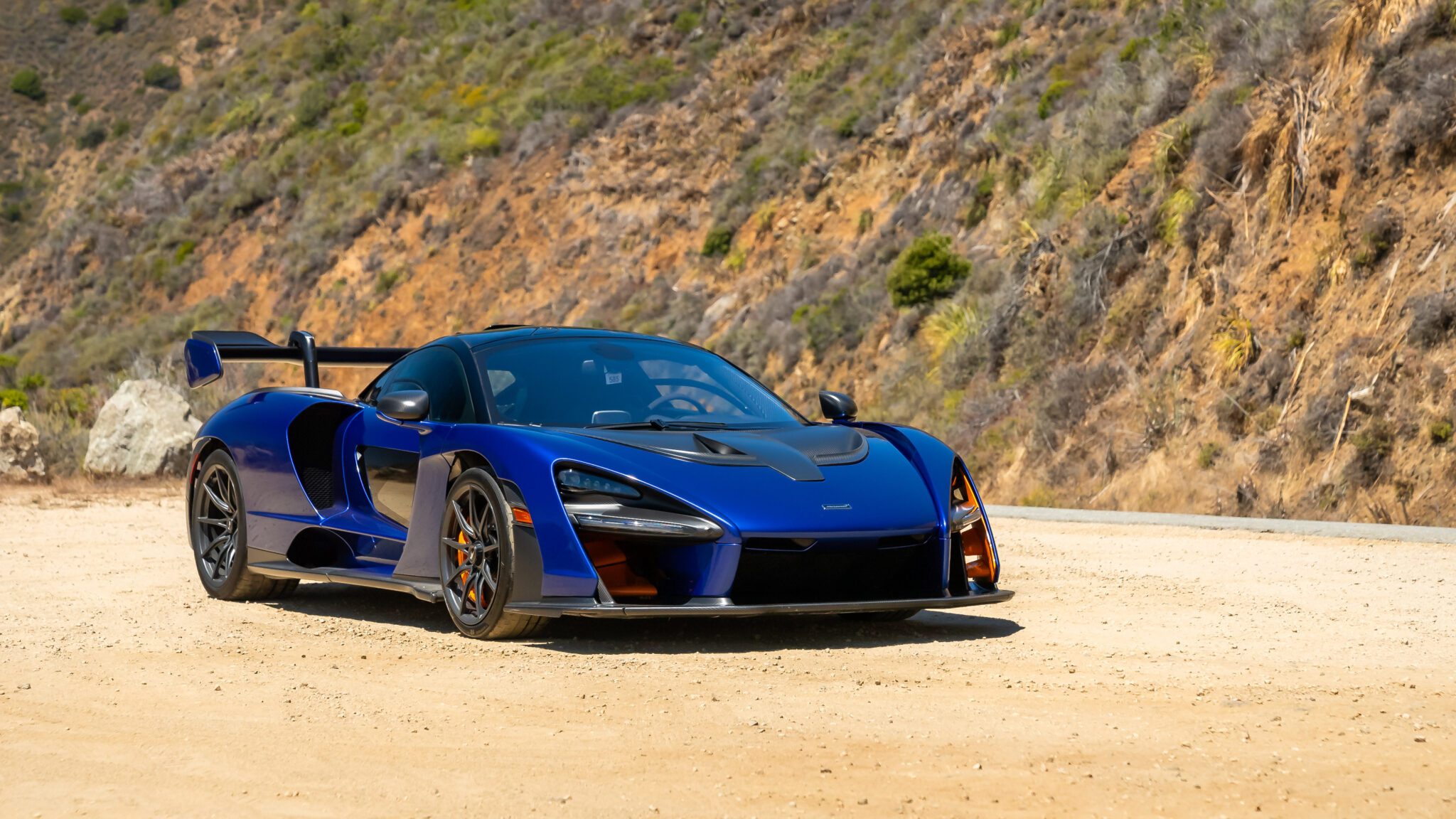
Viewed through this lens, the Senna was, in retrospect, ahead of its time. Even when new, it didn’t have the most horsepower or the quickest in a straight line. Instead, it takes the concept of the racecar for the road and focuses it to offer a memorable experience. From the moment its massive door opens, or its enormous wing adjusts into position, the Senna fills any space it inhabits with theater. What makes it unique, however, is that you don’t have to necessarily drive it to experience what makes it so special.
The spotters I first encountered, the kids that diligently stalked the Portola’s parking lot, had it right all along. Despite sitting in rarified air, the Senna stands as undeniably unique. It’s the kind of car you’re forced to admire, even if you’re not doing so for its looks. Years on, nothing on the road looks like it, and as it turns out, its strength remains that few cars can match the thrills it provides.
Tags: Featured
Related Articles
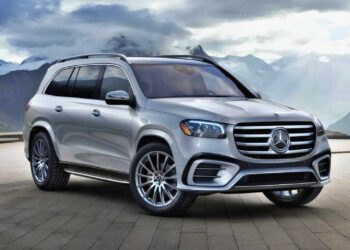
Review: 2025 Mercedes-Benz GLS 580 4Matic
Eating Up Monotonous Miles The drive from Milwaukee to St….
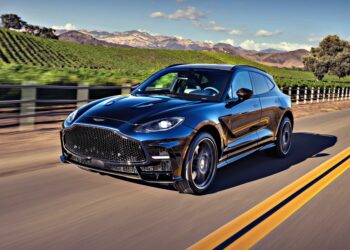
2026 Aston Martin DBX S First Drive: The Best Super SUV Gets Even Better
Model year 2026 marks the return of S variants to…
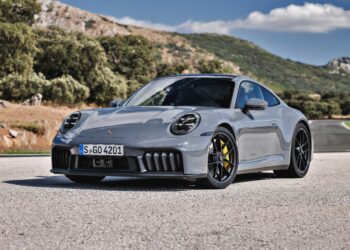
Review: 2025 Porsche 911 Carrera GTS T-Hybrid Electrifies Potent Performance
Picking through the menus of the infotainment screen and digital…
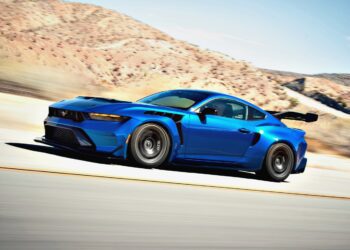
First Drive: Six-figure Ford Mustang GTD Boasts Peak Pony Muscle
If you think spending Lambo money on a Mustang is…



